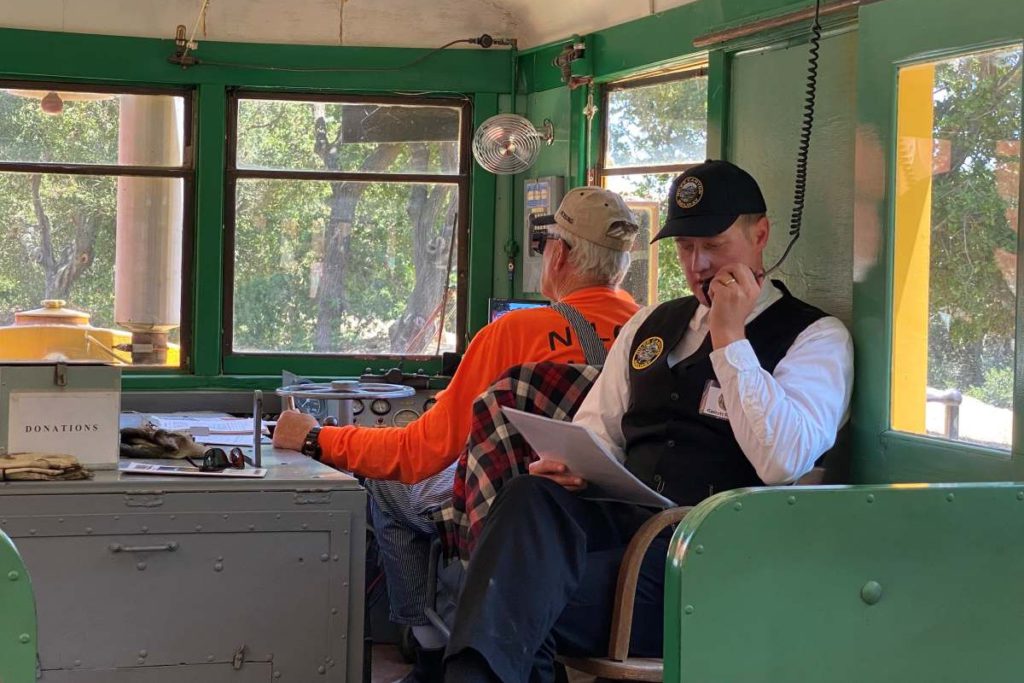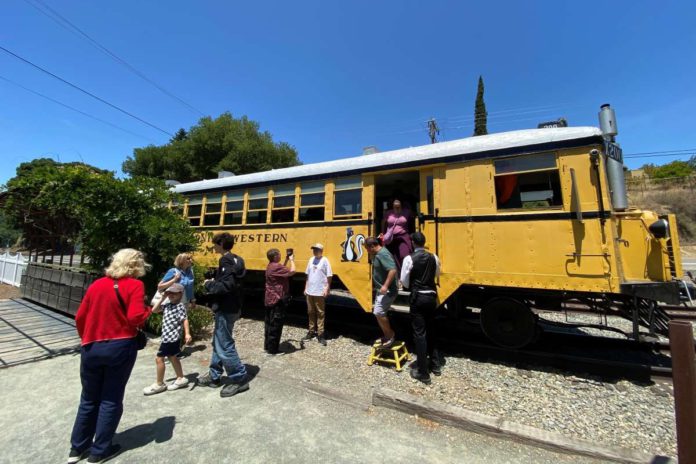Niles Canyon Railway (NCRy) would like it to be known that not everything that goes on rails is a train—such as the M 200 Motorized Rail Car that’s taking passengers East from Sunol this June.
On Sunday, June 15, as the usual collection of open and closed cars loaded passengers at Sunol Depot, a small yellow car waited just across the road at Sunol Depot Gardens, ready to take a course rail fans only rarely get to see.
The 1920s-era car looks like a school bus and in fact it did carry school children during the 1930s, after a stint transporting loggers to work up in Washington State. Now it is the only M series car still active.
These rail cars were called “skunk trains” because of the strong odor from the original gasoline engines and interior stoves. While NCRy’s M 200 does sport a sassy skunk decal, a diesel engine and open windows keep odor to a minimum.

Sunday’s crew comprised Steve Knoeck as brakeman, Tim Flippo as captain, Brad Jones as conductor and Garret Farwell as docent, giving commentary on the route. While the traditional Sunol-to-Niles ride takes passengers deep into Niles Canyon, the East route is up in the hills, running next to the Pleasanton Sunol Road.
Sites that riders can only see on the East route include, Arroyo de la Laguna Bridge, originally built as a covered bridge in 1865; Bonita (Hayfield) Crossing, where dairy farmers used to load 50-gallon milk cans onto the train and Hearst Junction, where Niles Canyon Railway connects to Union Pacific.
The ride ends at Happy Valley Bridge, near East Bay Agape Christian Church. Traveling at a relaxed five to seven miles per hour, the train makes the round trip in about 80 minutes.
But that’s not the final stop. This section of track goes all the way to Bernal Avenue near the Alameda County Fairgrounds. Every first Saturday of the month, NCRy volunteers are working to complete the track so trains can run from Niles to Pleasanton. A full round trip would run approximately two and a half hours.
Back at the depot, NCRy Secretary Rich Alexander also shared about the historical significance of the railway. “This is the last leg of the original transcontinental railroad. It’s the least-changed portion of the right of way left in the United States…Basically where the track is today is probably within feet or inches of where it was originally laid down in 1869.”
One more weekend of rail car rides is scheduled for June 21 and 22. Depending on the turnout, NCRy may run additional rides east of Sunol on the rail car in July. Even though school’s out, it makes the perfect field trip for kids and adults alike.




